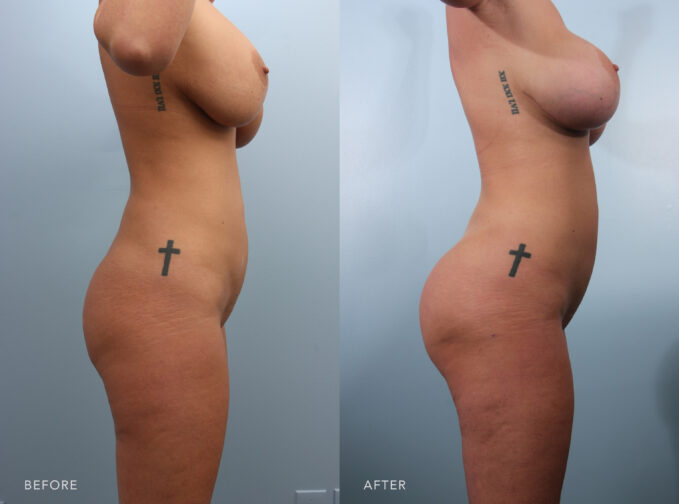Brazilian Buttocks Lift (BBL)Plastic Surgery in Latham, New York
Liposuction
One of the buttocks lifting procedures we offer at The Williams Center involves liposuction to sculpt the buttocks.
By removing fat from love handles, lower and upper buttocks, our specialized breast and body plastic surgeons may be able to provide patients with enough contouring to achieve desired results.
A fat transfer may also be recommended during the same procedure to fill and smooth any irregularities in the buttocks. There is no risk that patients may reject the fat because it is naturally found in their bodies. This will enhance and augment buttocks.
The BBL technique of fat transfer to the buttocks allow surgeons to create a soft, natural and long–lasting buttock contour without the use of implants.
Lifting
The last method that can be used to enhance buttocks includes a lifting procedure. If the buttocks have excess skin, the excess skin will need to be addressed.
Dr. Lloreda will excise any excess skin located around the buttocks by performing a traditional butt lift.
The incision is placed on the upper portion of the buttocks and as the buttocks are lifted, the extra skin is removed.
If there is a small amount of extra skin in the creases of the bottom, he is able to use it as a way to hide the incisions.
BBL Surgery
Dr. Lloreda may recommend any combination of the above procedures that will achieve the best, most natural-looking results to fit the patient’s unique body type.
Each patient has individual problem areas and desired results, so through the consultation process Dr. Lloreda will devise the best course of action based on the patient and their needs.
Often, patients undergo liposuction and the lifting procedure in conjunction with implants.
Brazilian Buttocks Lift Risks & Recovery
As with any plastic surgery procedure, there are risks associated with Brazilian butt lift surgery. These risks include bleeding, infection, asymmetry, changes in skin sensations and scarring.
Choosing a board-certified plastic surgeon lessens these risks because they possess the background and experience necessary to deliver a safe surgical outcome.
Recovery periods are generally one to two weeks until patients can resume daily activities and four to six weeks until patients can perform strenuous activities, including exercise.
Patients will need someone to stay with them the first night following the outpatient surgery because of the aftereffects of anesthesia.
Dr. Lloreda places all sutures internally, meaning that they will not need to be removed. Steri-Strips are applied but will fall off on their own after two to three weeks.
